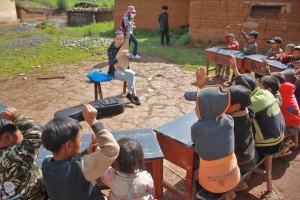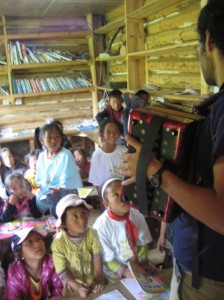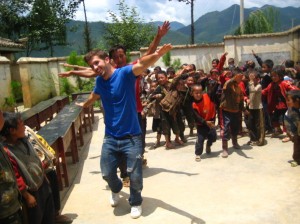by Sedgwick Clark
An article on AOL early this week by Aaron Crowe profiles the U.S.’s the ten worst cities to live in. The reasons are no surprise: unemployment, climate, crime, foreclosures. In the worst, El Centro, CA, unemployment is 27.5% and the cemetery is in foreclosure. Five cities caught my eye for reasons unspecified in the article but which my readers will understand:
2. Cleveland
3. Detroit
6. Los Angeles
8. Newark
9. Miami
Last year more people left Cleveland than any other major city: 2,658. Brutal winters, political corruption, lousy sports teams, and high taxes are blamed. Unmentioned: the flight of large businesses that once contributed to the arts.
Detroit is crimewise the country’s “most dangerous city,” with 13.7% unemployment, a “stumbling” although hopefully improving auto industry, and the highest national office vacancy (30%) in the land. Last year you could buy a house for $10,000.
“If you don’t really care about breathing,” writes Crowe, “Los Angeles is a great place.” It has the worst ozone level and most congested traffic in the States. Best wear goggles.
“Political and social dysfunction” have plagued Newark for memory-defying years. The city’s young, energetic mayor, Corey Booker, has made inroads into crime and poverty, but a $70 million deficit doesn’t leave much for the New Jersey Symphony.
After Detroit, Miami is the worst place to raise a family. It also has some of the worst drivers and traffic in the country. The Miami Philharmonic folded a few years ago, just before the new arts center with no parking facilities opened. But it does have the New World Symphony, which recently announced that Frank Gehry would build it a new concert hall—so don’t abandon all hope, ye who enter.
40 Years of James Levine at the Met
The Metropolitan Opera has announced the release of huge CD and DVD sets to honor James Levine’s 40th anniversary, with 11 operas on each format and a bonus DVD of concert performances. The complete list is below.
I’m especially happy to see the 1983 Pelléas et Mélisande in the CD set. This was the second time around for Levine at the Met in Debussy’s only completed opera. His first go at Pelléas had been in 1978 with a brilliant theatrical touch at the beginning: The house lights dimmed to black, and Levine made his way to the podium in total darkness. The music welled up from the void, and ever so slowly the lights on the players’ music stands began to glow. As the opera progressed, however, Levine’s conducting struck me as perfect in every detail but shy of atmosphere overall. But by 1983 his Pelléas was luminous, reminding me of Ansermet’s stereo recording, and I can’t wait to hear it. Jeannette Pilou, Dale Duesing, José van Dam, and Jerome Hines are featured in the cast. A bonus CD contains excerpts from two other performances: one from 1978 with Stratas, Gabriel Bacquier, and Hines, and a second from 1995 with Frederica von Stade and Dwayne Croft. I’ll be interested to hear how my memory holds up.
Longtime broadcast producer Jay David Saks promises revelations in his digital remastering of these recordings. Many of them date back to c. 1980, and at the time I often found their sonic perspective overly close (undoubtedly in the interest of vocal clarity) and lacking in atmosphere. These qualities are a death knell to Pelléas. (I especially recall my disappointment with the broadcast’s sonic dissection of Manuel Rosenthal’s wondrous performance of Ravel’s L’Enfant et les Sortìleges, which was so magical in the house.). But who knows what glories are possible in the remixing process? I cross my fingers.
11 Titles on 32 CDs
Berg: Lulu
Christine Schäfer, Hanna Schwarz, David Kuebler, Clifton Forbis, James Courtney; April 21, 2001
Berg: Wozzeck
José van Dam, Anja Silja, Ragnar Ulfung, Richard Cassilly, Dieter Weller; March 8, 1980
Berlioz: Benvenuto Cellini
Marcello Giordani, Isabel Bayrakdarian, Kristine Jepson, Peter Coleman-Wright, John Del Carlo, Robert Lloyd; December 27, 2003
Berlioz: Les Troyens
Lorraine Hunt Lieberson, Deborah Voigt, Ben Heppner, Dwayne Croft, Robert Lloyd; February 22, 2003
Debussy: Pelléas et Mélisande
Jeannette Pilou, Dale Duesing, Jocelyne Taillon, José van Dam, Jerome Hines; January 22, 1983
Harbison: The Great Gatsby
Jerry Hadley, Dawn Upshaw, Dwayne Croft, Susan Graham, Lorraine Hunt Lieberson, Mark Baker; January 1, 2000
Parade (triple bill)—Satie: Parade / Poulenc: Les Mamelles de Tirésias / Ravel: L’Enfant et les Sortilèges
Ainhoa Arteta, Danielle de Niese, Earle Patriarco, Ruth Ann Swenson, Wendy White; March 16, 2002
Schoenberg: Moses und Aron
Philip Langridge, John Tomlinson; February 20, 1999
Stravinsky: The Rake’s Progress
Dawn Upshaw, Paul Groves, Samuel Ramey, Stephanie Blythe; April 19, 2003
Stravinsky (triple bill)—Stravinsky: Le Sacre du Printemps / Le Rossignol / Oedipus Rex
William Lewis, Florence Quivar, Franz Mazura, Gianna Rolandi, Philip Creech; February 25, 1984
Wagner: Lohengrin
Ben Heppner, Deborah Voigt, Deborah Polaski, Hans-Joachim Ketelsen, Eric Halfvarson; March 21, 1998
12 Titles on 21 DVDs
Berg: Lulu
Julia Migenes, Franz Mazura, Evelyn Lear, Kenneth Riegel; December 1980
Berg: Wozzeck
Falk Struckmann, Katarina Dalayman, Wolfgang Neumann, Graham Clark, Michael Devlin; October 2001
Corigliano: The Ghosts of Versailles
Teresa Stratas, Håkan Hagegård, Marilyn Horne, Gino Quilico, Graham Clark, Renée Fleming; January 1992
Mozart: Le Nozze di Figaro
Carol Vaness, Kathleen Battle, Frederica von Stade, Thomas Allen, Ruggero Raimondi; December 1985
Puccini: Il Trittico
Renata Scotto, Cornell MacNeil, Vasile Moldoveanu, Betsy Norden, Jocelyne Taillon, Gabriel Baquier, Italo Tajo, Philip Creech; November 1981
Smetana: The Bartered Bride
Teresa Stratas, Nicolai Gedda, Jon Vickers, Martti Talvela; November 1978
R. Strauss: Ariadne auf Naxos (Virgin Classics release)
Deborah Voigt, Natalie Dessay, Susanne Mentzer, Richard Margison, Nathan Gunn; April 2003
R. Strauss: Der Rosenkavalier
Tatiana Troyanos, Kiri Te Kanawa, Kurt Moll, Judith Blegen, Derek Hammond-Stroud, Luciano Pavarotti; October 1982
R. Strauss: Elektra
Hildegard Behrens, Deborah Voigt, Brigitte Fassbaender, James King, Donald McIntyre; January 1994
Verdi: Don Carlo
Vasile Moldoveanu, Renata Scotto, Tatiana Troyanos, Sherril Milnes, Paul Plishka, Jerome Hines; February 1980
Weill: The Rise and Fall of the City of Mahagonny
Teresa Stratas, Astrid Varnay, Richard Cassily, Ragnar Ulfung, Cornell MacNeil; November 1979
In Concert at the Met (Highlights)
Plácido Domingo, Tatiana Troyanos (February 28, 1982); Leontyne Price, Marilyn Horne (March 28, 1982); Plácido Domingo, Sherrill Milnes (January 30, 1983).





